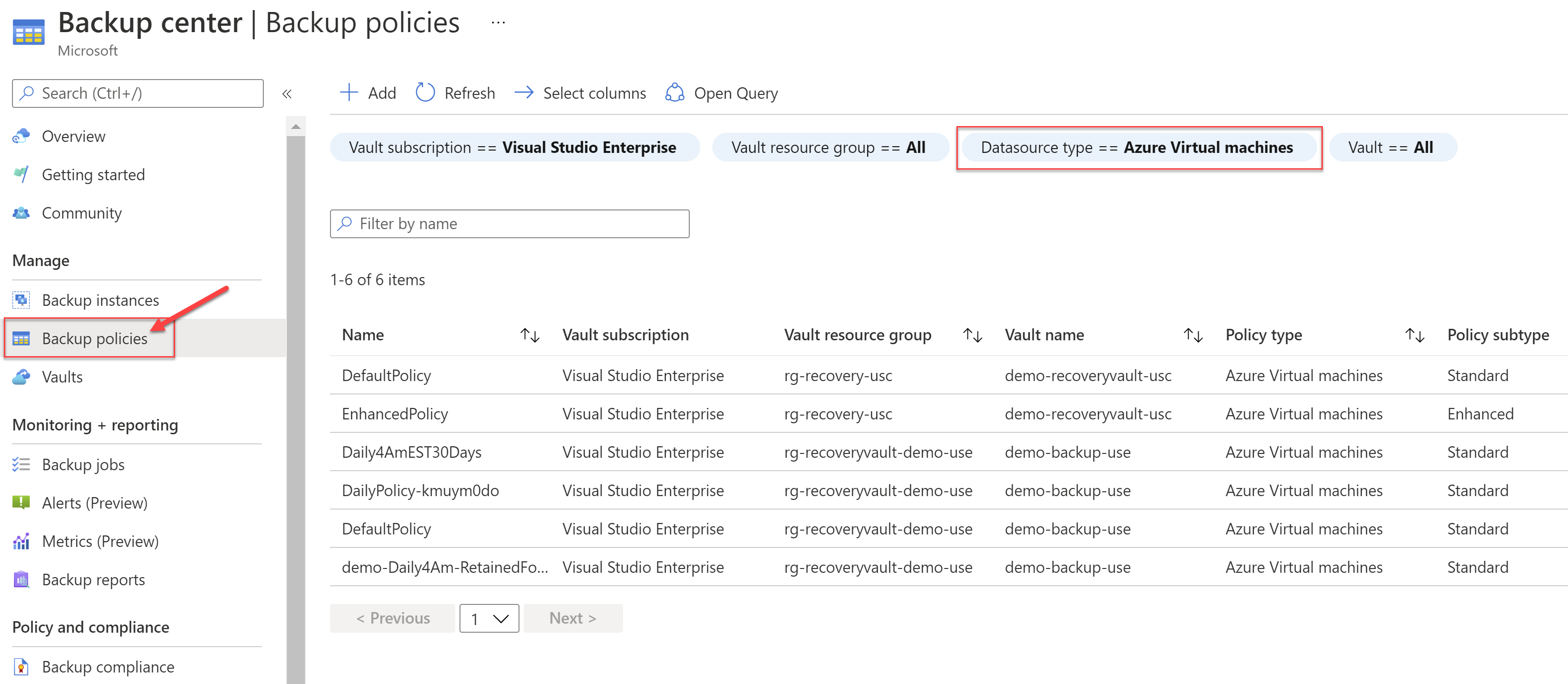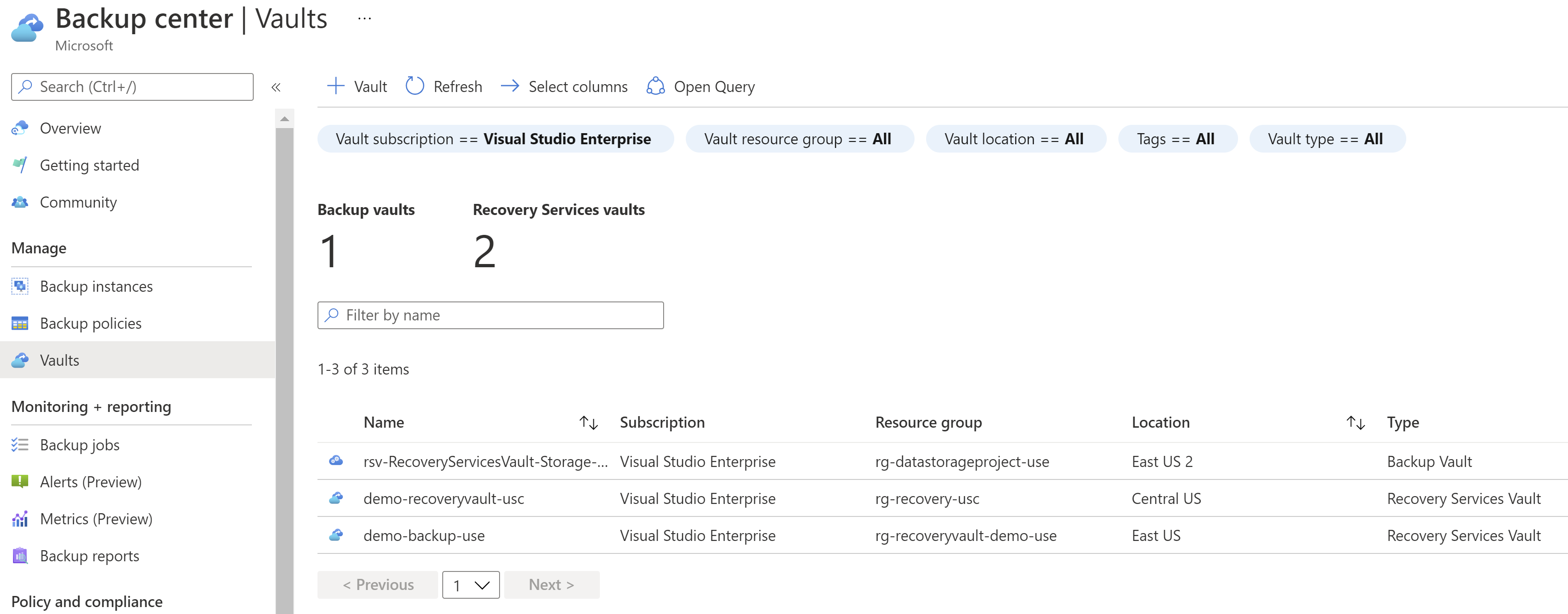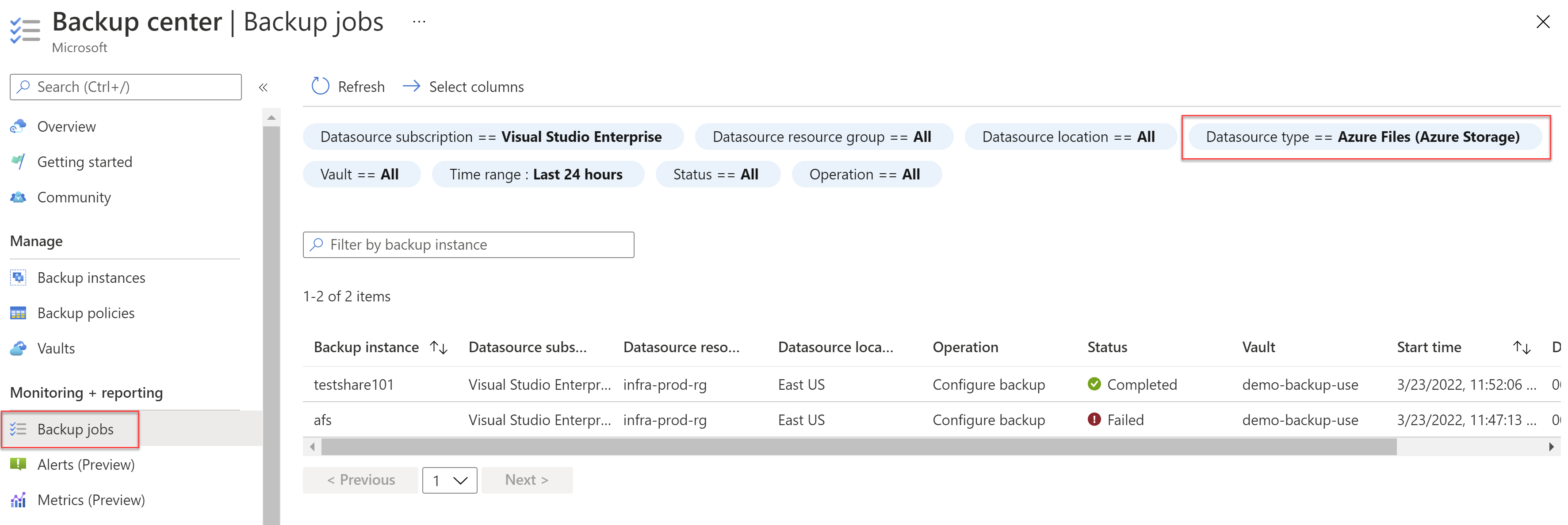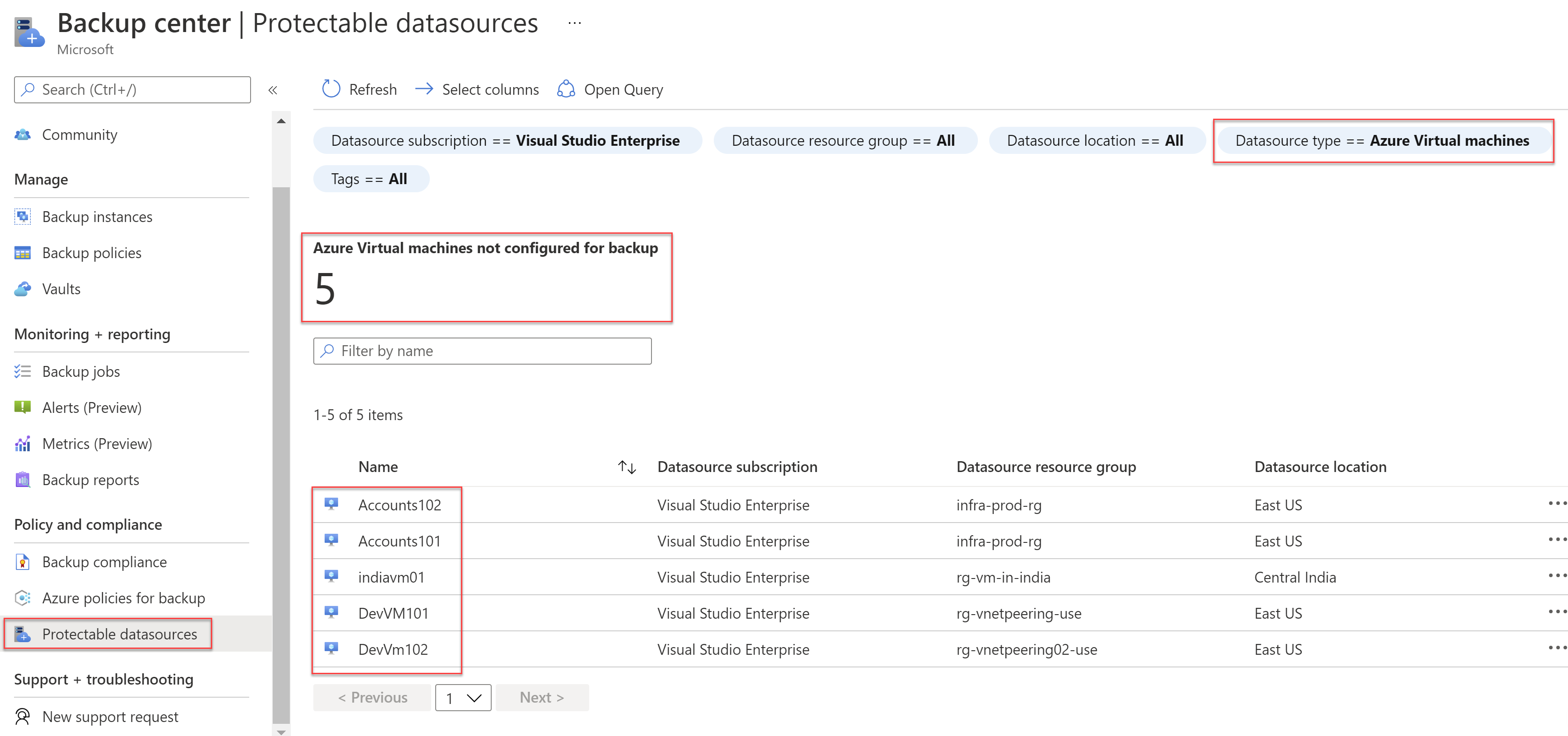Simplifying the Azure Backup Center - Part 2
@20aman Sep 17, 2021In the previous post, we looked at the overview of the Backup Center. You can read the first part here: Simplifying the Azure Backup Center - Part 1
In this post, we will look closely at various sections and actions within it. When you launch Backup Center, as we saw in the previous post, you are presented with the Overview screen. This screen is powerful in itself in presenting you with a unified view of backup of various datasource types across your environment. Other parts of the Backup Center are clubbed into the following three main categories:
- Management
- Monitoring & Reporting
- Policy and Compliance
Let's look at these three areas in detail.
1. Management
The management section lets you manage various aspects of your backup. The first aspect is the backup instances. Here you can view and manage various backup instances filtered by your datasource type. The key thing to note is that the view and various columns that are shown automatically update based on the datasource type selected. You can also set up new backup and /or trigger restore from the existing backup by using the buttons at the top of the page.

Next section "Backup Policies" let's you view and manage backup policies across your environment. You can make updates as required. You can also create new backup policies as well.

The third and the last section in this category is the ability to view Vaults (both backup and recovery services vaults) across your environment. You can navigate to those vaults by clicking on the corresponding row. You can also create a new vault from here.

2. Monitoring and Reporting
The monitoring and reporting section helps you with supporting your backup infrastructure. It has the following three sections:
- Backup jobs - shows you all the backup-related jobs, across your environment.
- Alerts - shows you all alerts related to your backup data across different vaults.
- Metrics - provide monitoring of various metrics on the backup data. The main two metrics available are "Backup health events" and "Restore health events".
- Backup reports - detailed reporting into the backup data linked to log analytics.

3. Policy and Compliance
The policy and compliance section is all about the governance of the backup data. The main sub-sections in this section are:
- Backup compliance - it shows you the compliance of various resources related to backup based on the policies and initiatives applied in your environment. It looks for the backup category for the policies and initiatives.
- Azure policies for backup - All the Azure policies, filtered by the "backup" category. You can also view the initiatives here by updating the drop down based filters.
- Protectable datasources - These are all the resources that can be protected.
Protectable datasources is very important section as it helps you easily find all the resources for which you haven't configured the protection. Filter by datasource type to view the resources that can be protected for that type. E.g. in the image below it shows you all the VMs that can be protected via the backup services.

That is all there is to it. Explore all these sections one by one and play around with different options available in each. Backup Center is very powerful in unifying the backup experience and providing a single pane of glass to monitor and manage your backups.
References: